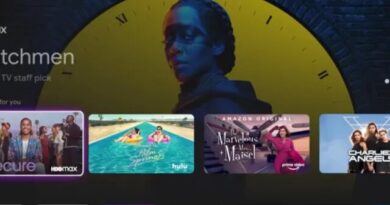The need for (mobile) speed: Small improvements have a big conversion impact
A 0.1 second site speed boost increased retail AOV by almost 10%, Deloitte study finds.
The study was issued in conjunction with a number of Google mobile app campaign announcements and the upgrade of the company’s Test My Site tool to include Web Vitals reporting.
Mobile ‘dominant digital touchpoint.’ Given that we live in a mobile-first world — Deloitte calls it the “dominant digital touchpoint” — the mobile user experience is increasingly synonymous with brand experience. The firm cites an eMarketer forecast that asserts m-commerce “will double from 2019–2023, ultimately accounting for three-quarters of total e-commerce sales.” Today, however, mobile accounts for more site traffic but fewer conversions than on the desktop. Speed is a factor.
For the study, Deloitte created an elaborate methodology to measure mobile site performance. It approached 70 brands, 37 were eventually selected “after passing analytics, technical and qualitative audits.” It developed a KPI framework and mapped conversion journeys. It identified four key speed metrics and developed a statistical model to measure their impact. Site speed data was measured using Google Lighthouse “and aggregated with brands’ web analytics data.”
Analysis of four verticals. The company looked at four verticals: retail, travel, luxury (apparel) and lead-generation. It measured conversions in each case, here defined as the number of users who transacted, “added to basket,” clicked “contact us” or completed a form, in the case of lead generation.
The study found that page speed was directly correlated with higher engagement and “improved funnel progression.” Faster mobile sites resulted in more page views, higher conversions and greater average order value per customer across each of the verticals measured. More concretely, a 0.1 second improvement in site speed resulted in:
- Retail conversions increases of 8.4% and average order value increases of 9.2%.
- Travel conversions increase of 10.1% and average order value increase of 1.9%.
- Luxury brand page views per session increase of 8.6%.
- Lead-gen pages bounce rate improvement of 8.3%
There’s a detailed discussion and case studies for each vertical. For example, Deloitte observed that for retail sites it’s more important to focus on the speed of product pages vs. the retailer’s homepage, “because many people visiting your homepage are already loyal to your brand while those going straight to the product page might be coming from an ad” and they will potentially bounce if the page doesn’t load fast enough.
Mobile speed still lags far behind desktop. A separate study using Google page speed metrics, conducted in April by Milestone, examined thousands of sites across 11 verticals. It found that “mobile speed still lags far behind desktop speed at 2.6 times slower, 2.9 seconds to 7.9 seconds.” It also discovered that speed varied significantly by industry: financial services and technology were the fastest and construction had the slowest mobile load times.
The study concluded that “most mobile sites tested are very slow with an average mobile speed score of 40.1 and an average Speed Index of 7.9 seconds.” A subsequent Milestone analysis of AMP pages concluded they were positively correlated with improved rankings and visibility in search results, finding that “non-AMP pages are 108% slower loading” than AMP pages.
Google recently announced that AMP will no longer be required to appear in the Top Stories section of search results. This may cause widespread abandonment of AMP. But the speed boost and improved visibility of AMP pages may give publishers reasons to stick with it.
Why we care. Marketers need to make culture and operational changes to further prioritize mobile experiences and site speed. As Deloitte points out in its report, “the competitive gap will widen between brands who provide great mobile experience and those who don’t.” The firm also argues that it’s not enough to be the fastest in your vertical or category, brands and retailers are now competing “with the best digital experience a consumer has ever had.”



